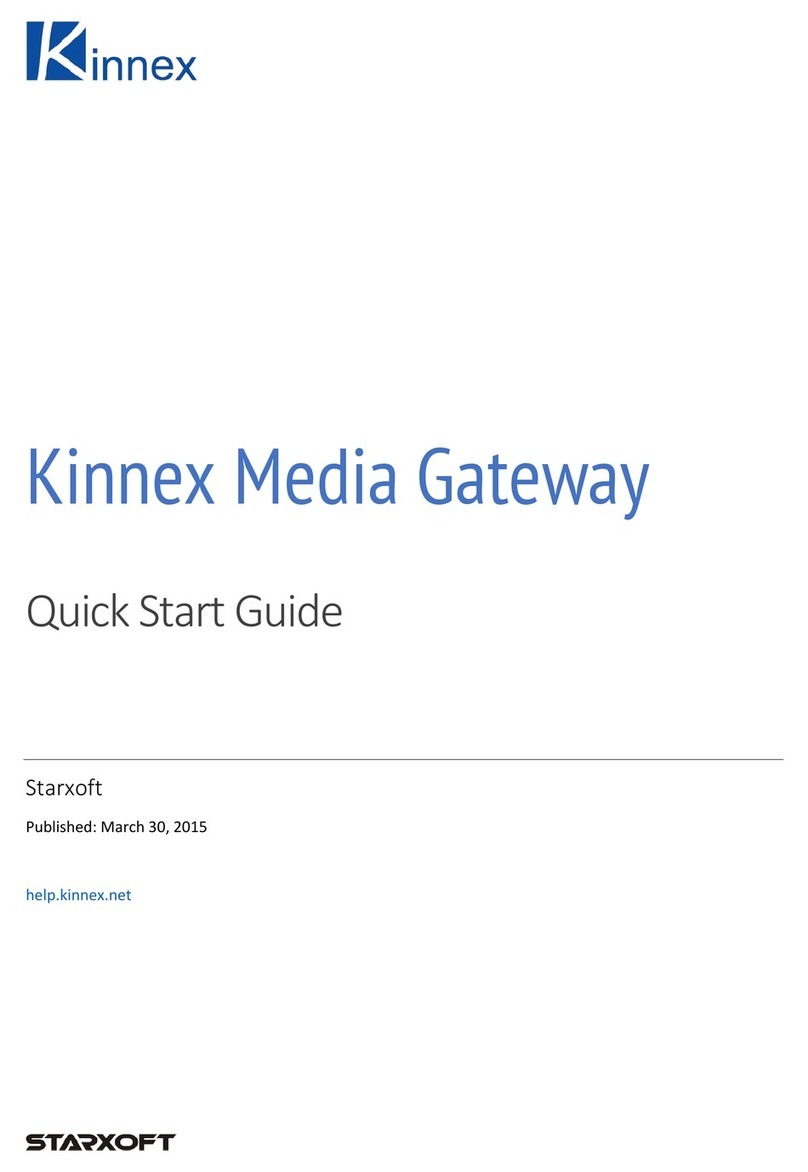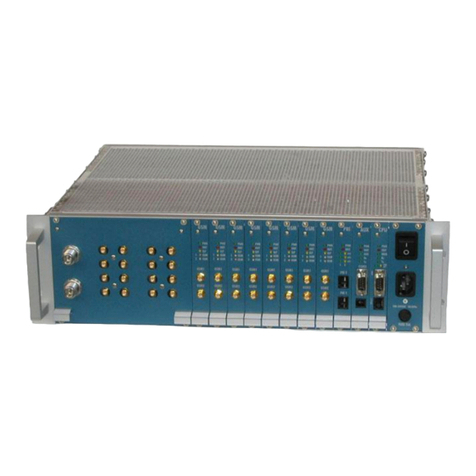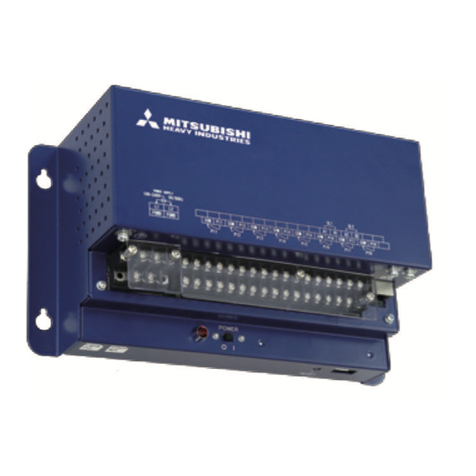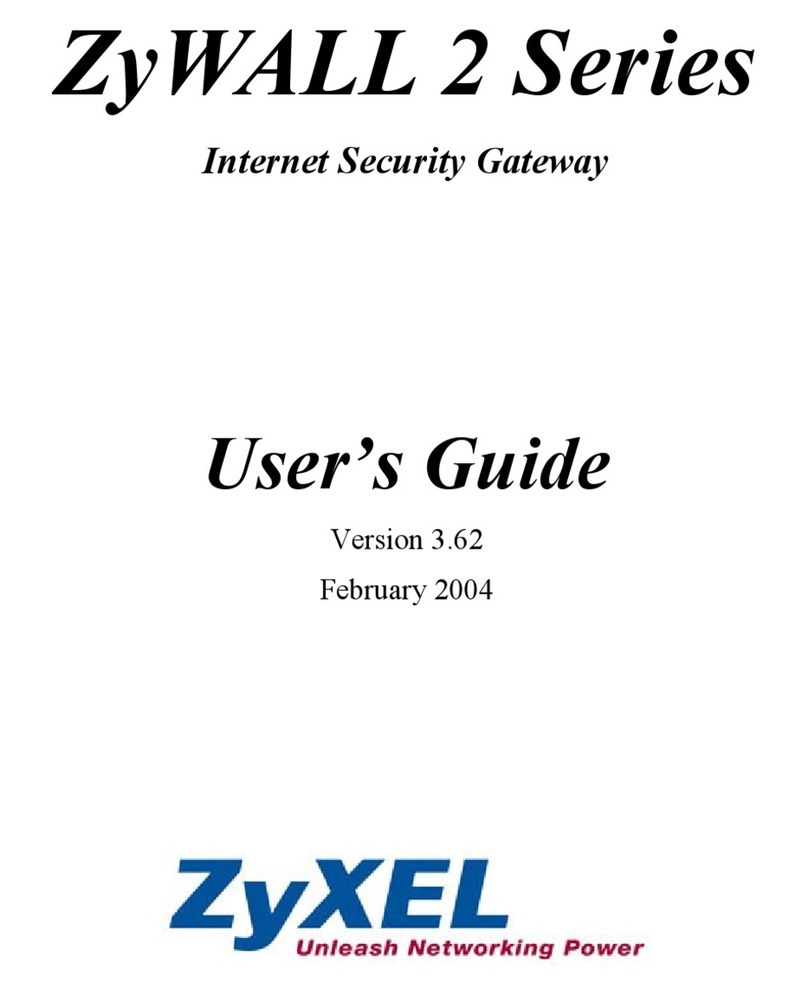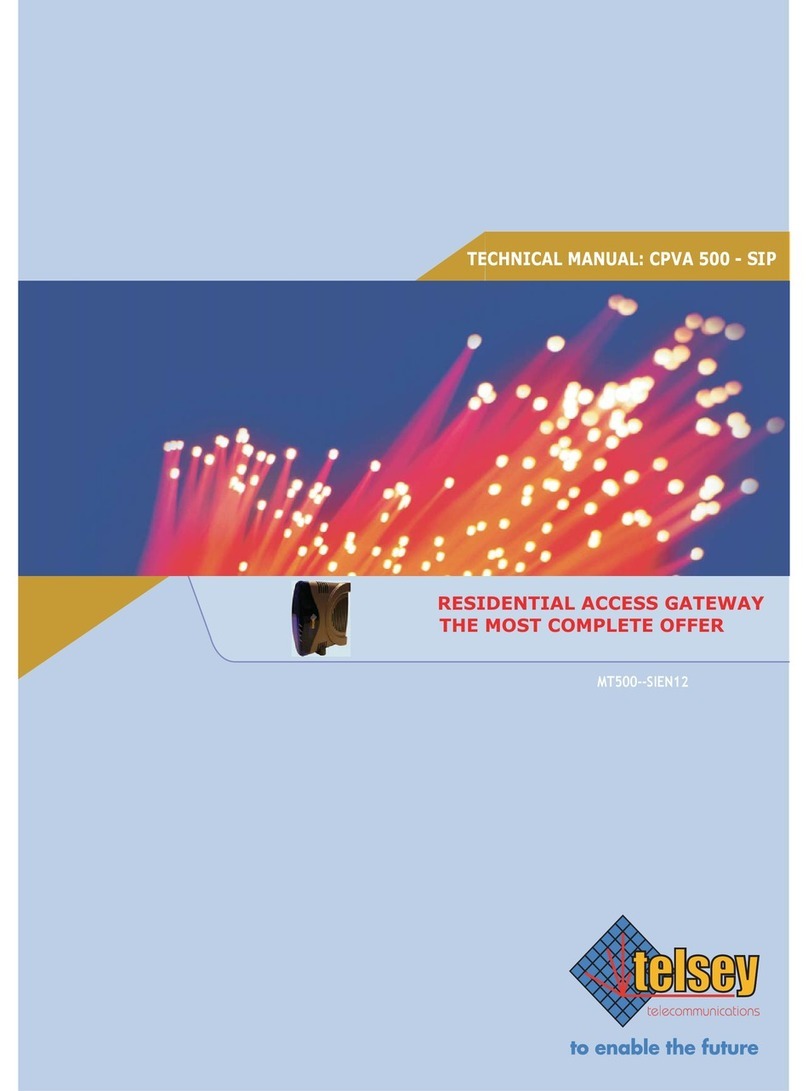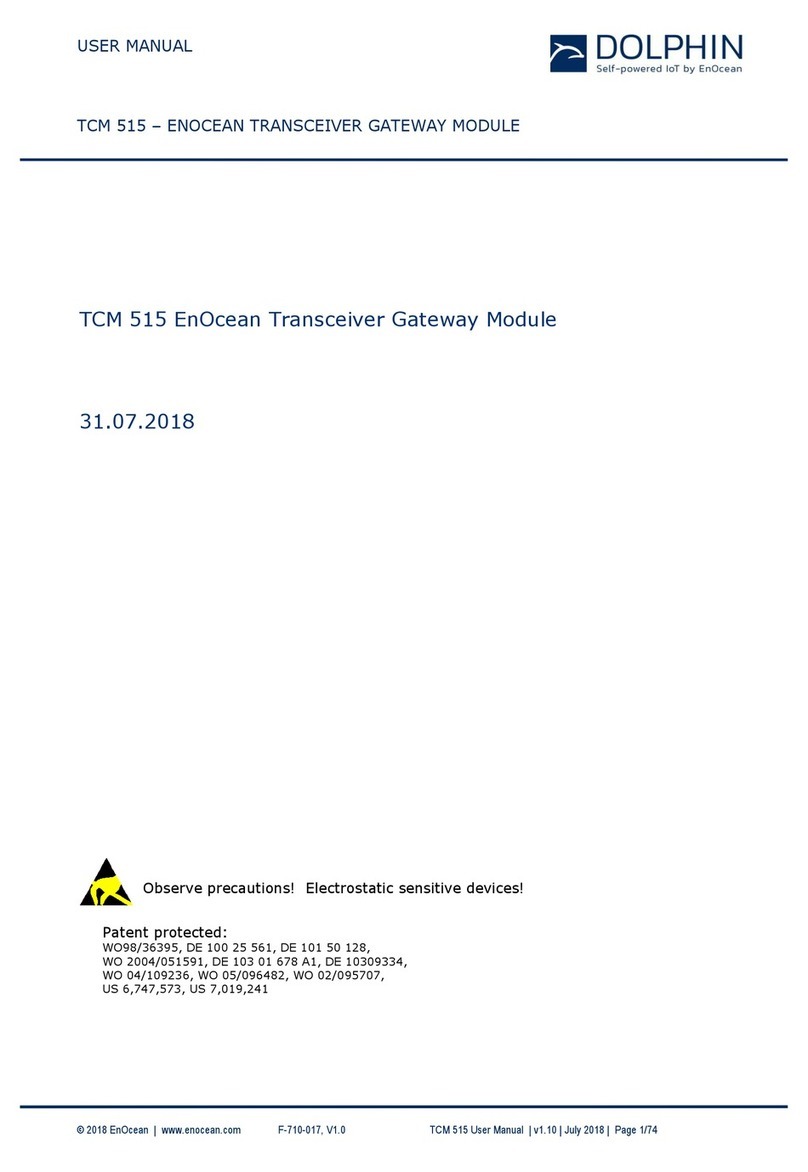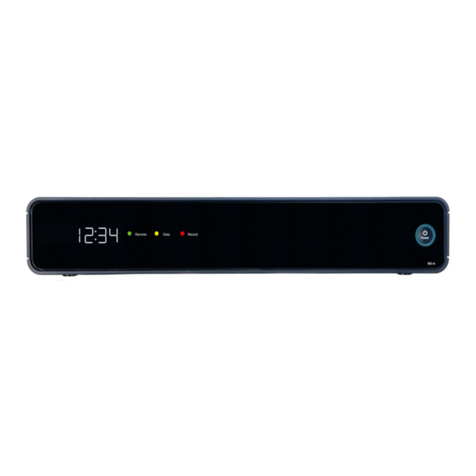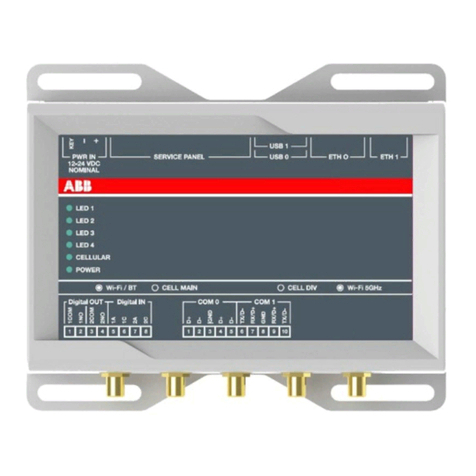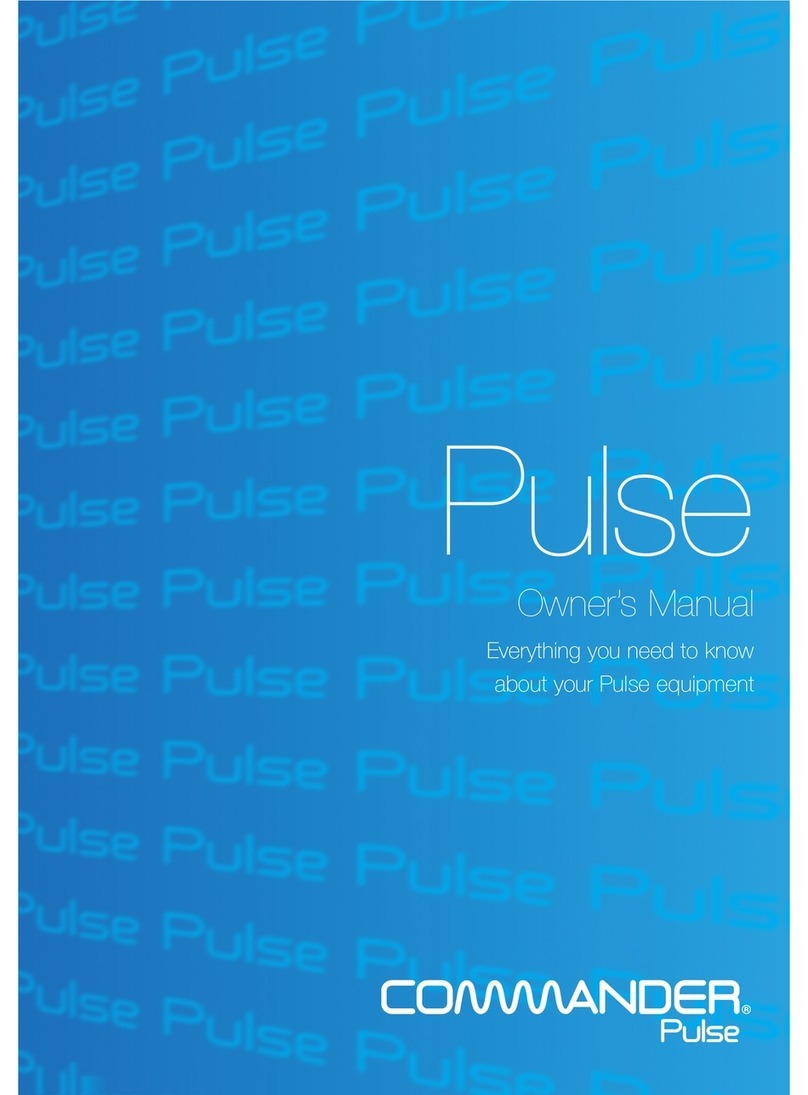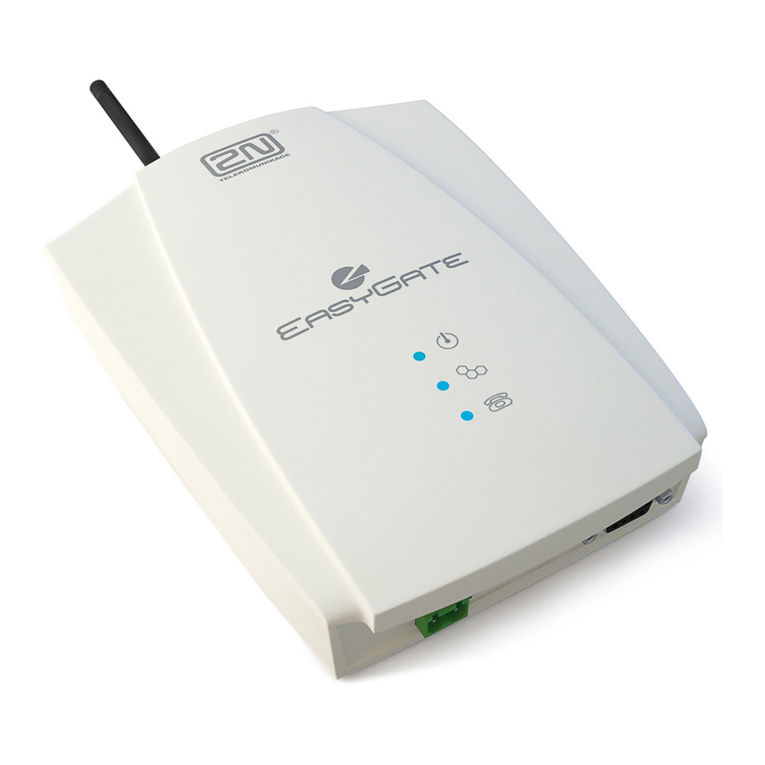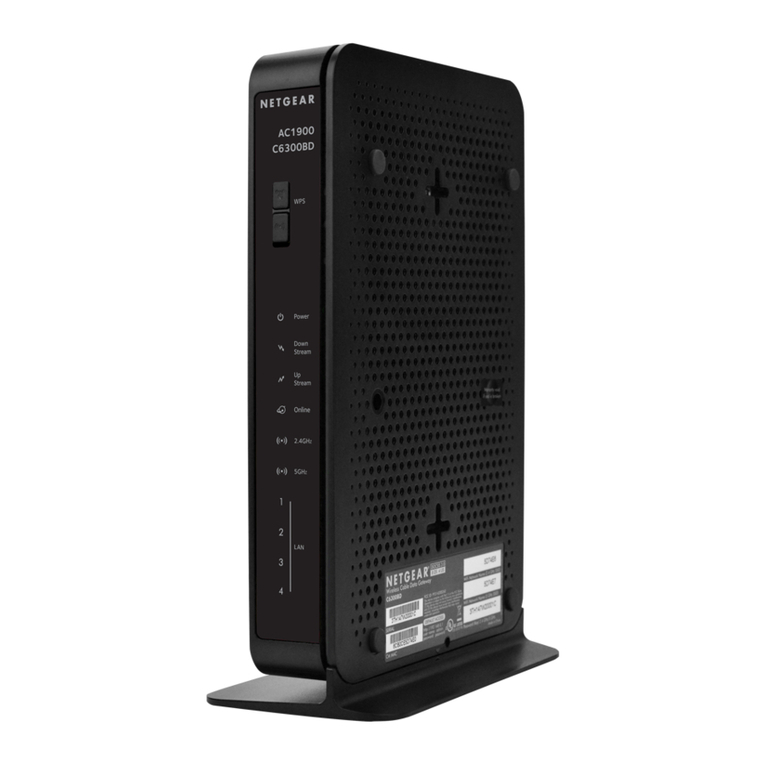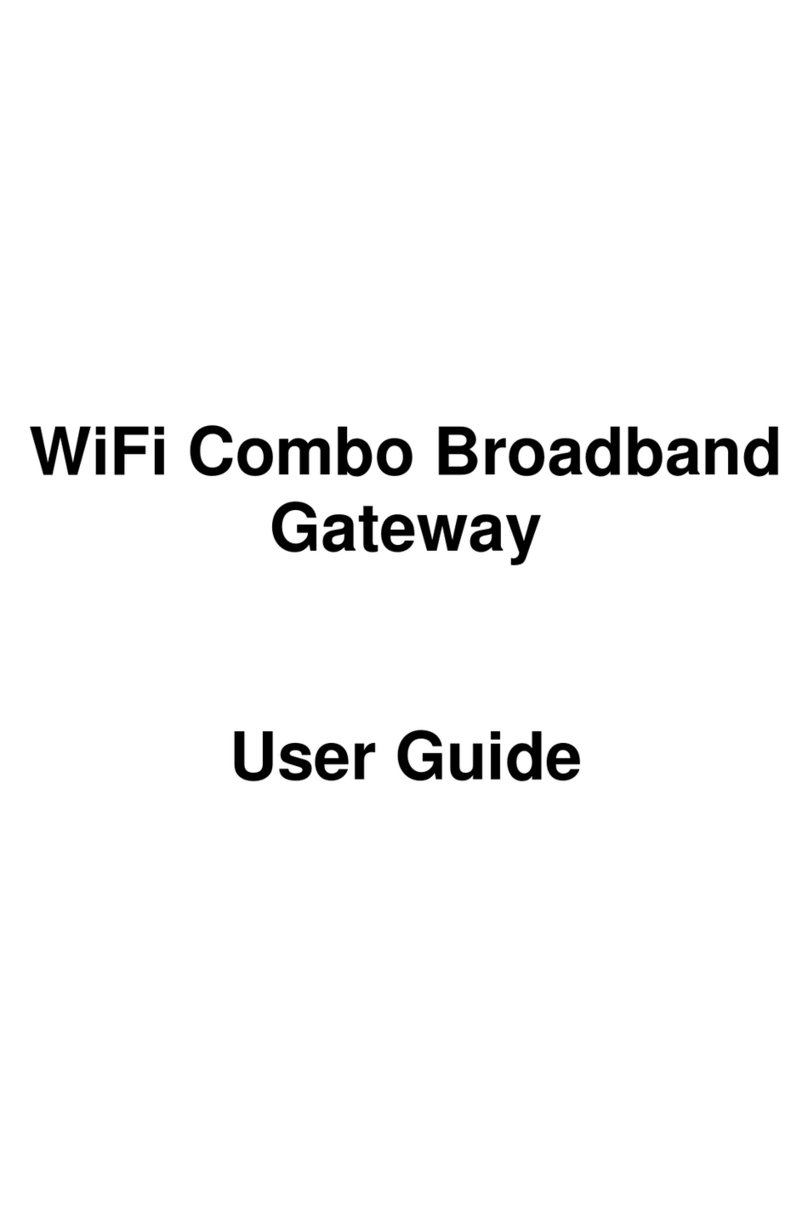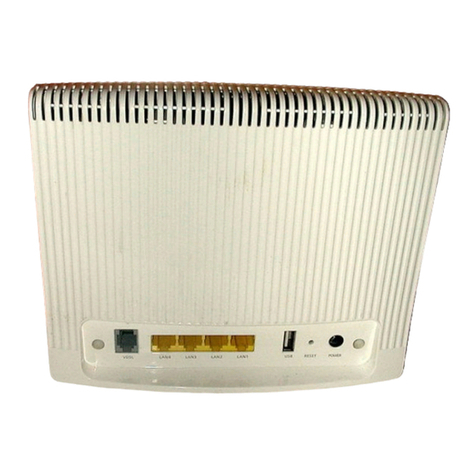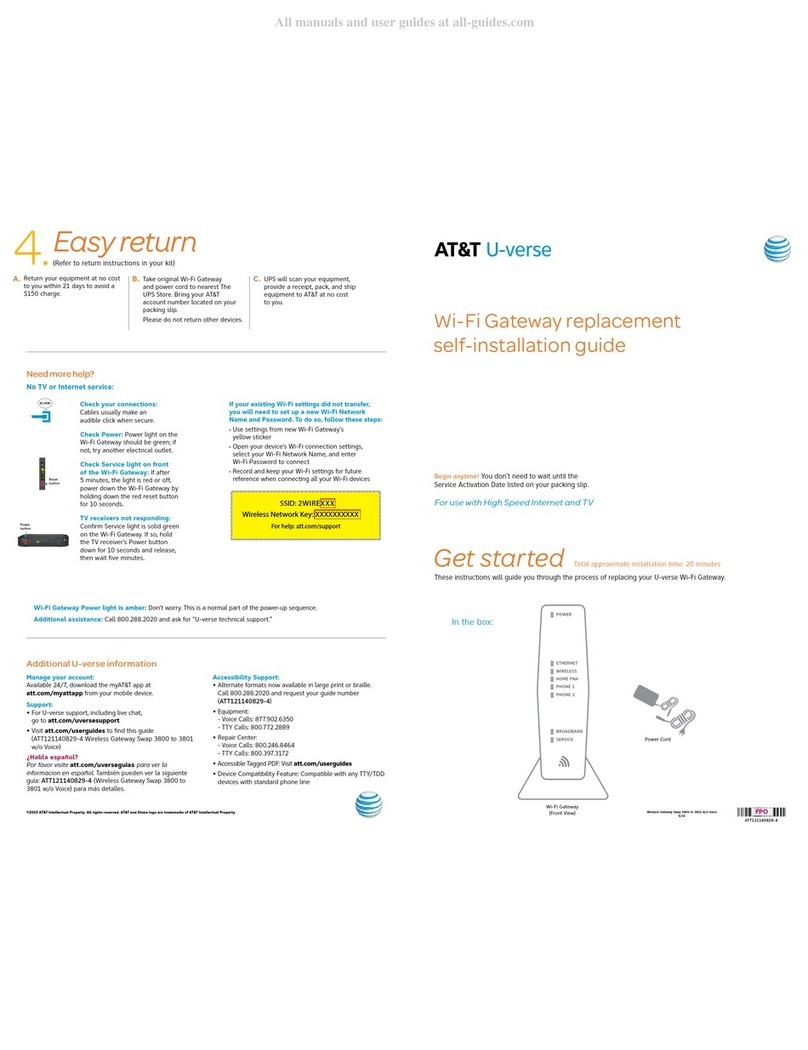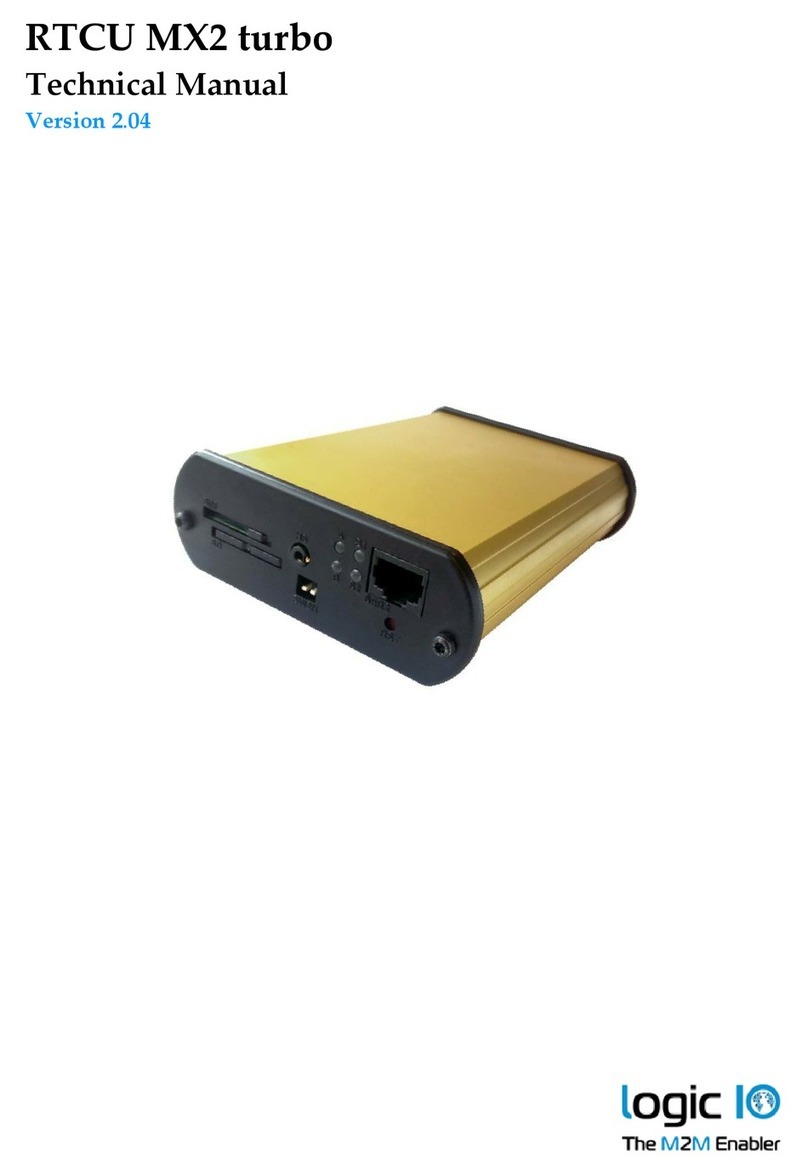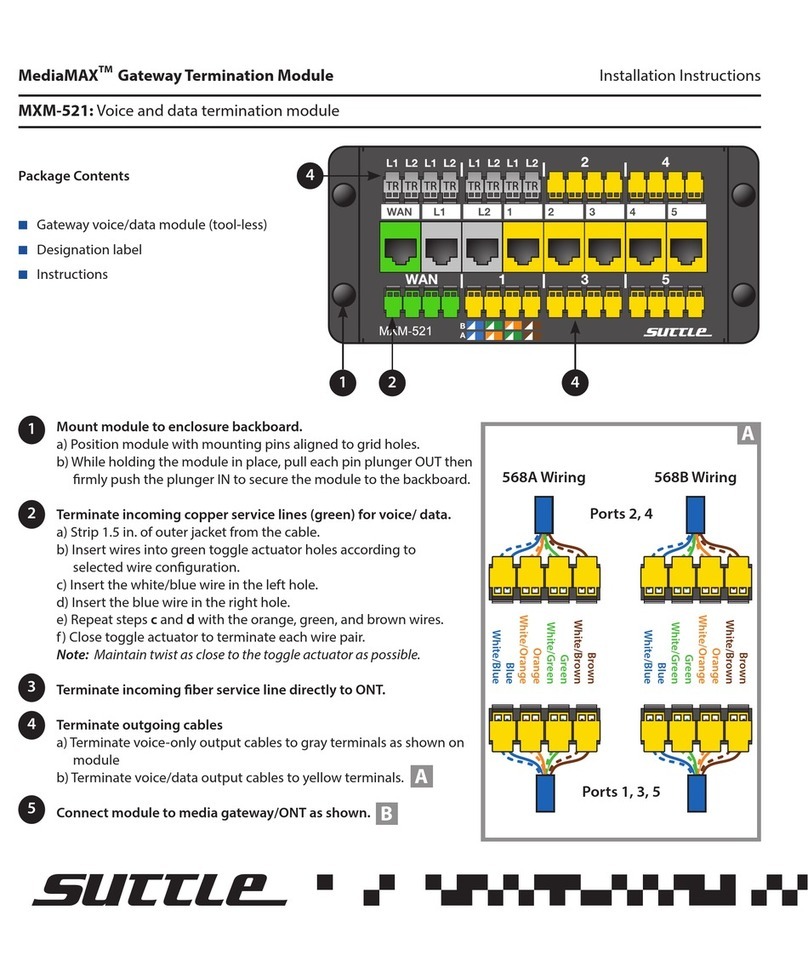USER MANUAL
USB 300 / USB 300U / USB 400J
USB Gateway for EnOcean Radio
© 2017 EnOcean | www.enocean.com USB 300 / USB 300U / USB 400J User Manual | June 2017 | Page 10/12
7. RESTRICTIONS AND HINTS
USB 300 should not be exposed to rapid temperature changes shortly before or during
operation. Condensation of moisture might damage the device.
USB 300 is not intended to be used in rough environment with heavy vibrations or me-
chanical shocks.
The USB 300 front cap is used as handling protection during delivery.
USB 300U:
In order to optimize radio performance you have to stretch out
whip antenna. Please do not cut of, coil up, brake or bend frequently.
Installation location of radio nodes should be carefully planned.
Application note AN001 at http://www.enocean.com/en/application-notes/
will explain basic rules.
Any USB 300 configurations done by ESP3 commands (e.g. repeater on, filter, maturity
time) will be lost in case of power off. If you need these configurations permanent,
make sure USB 300 has continues power or re-send commands after power down.
USB 300 has been designed for usage with DolphinView Basic. For advanced protocol
analysis and debugging we recommend the usage of EnOcean Developer Kit with
DolphinView Advanced and DolphinSniffer.
USB 300 has been optimized for cyclic sending/receiving status values and not for con-
tinuous data communication; therefore the radio interface is limited to receive approx.
90 telegrams per second. Higher traffic can lead to telegram loss.
Microsoft Windows increases the COM port number for every installed USB 300/400
(FTDI virtual COM port device). If the number reaches 255, you have to reset the de-
vice driver and follow the instructions from the company FTDI.

